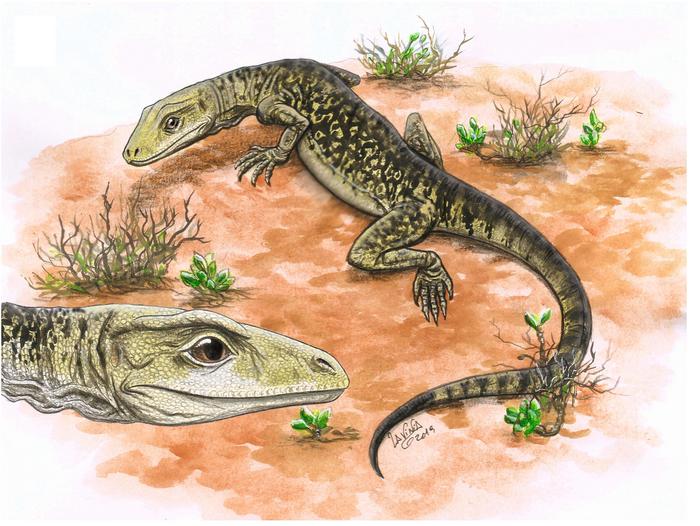A tiny fossil from Triassic-era rocks has reignited the debate about lizard evolution, with new analysis confirming it as the world’s oldest modern-type lizard – pushing back the origins of today’s lizards and snakes by 35 million years.
Published in Royal Society Open Science | Estimated reading time: 4 minutes
The fossil in question, Cryptovaranoides microlanius, discovered near Bristol, UK, has become the center of an intense scientific debate about the early evolution of lizards. Initially described as the oldest known crown-group squamate (modern lizard), the specimen’s identity was recently challenged by researchers who suggested it might instead be related to crocodiles and dinosaurs. Now, a comprehensive reanalysis has decisively confirmed its identity as a true lizard.
The research team, led by Dr. David Whiteside from the University of Bristol, conducted an exhaustive examination of the 205-million-year-old specimen using both direct observation and advanced CT scanning. Their findings reveal multiple anatomical features characteristic of modern lizards, including specialized jaw structures and distinctive tooth attachment patterns.
“We found clear evidence of key lizard features that had been overlooked in the challenge to our original identification,” explains Dr. Sofia Chambi-Trowell, co-author of the study. “The specimen shows unmistakable characteristics of modern lizards, particularly in its skull structure and tooth attachment.”
Among the most compelling evidence are the specimen’s pleurodont teeth – teeth attached to the inner surface of the jaw, a hallmark feature of modern lizards. The team also identified specific structures in the braincase and palate that are typical of squamates but absent in archosauromorphs (the group including crocodiles and dinosaurs).
Glossary
- Squamate
- The group comprising all living lizards and snakes, characterized by distinctive skull and tooth features.
- Pleurodont
- A type of tooth attachment where teeth are fused to the inner surface of the jaw bone, typical of modern lizards.
- Archosauromorph
- The group including crocodiles, dinosaurs, and their close relatives, characterized by different skull and skeletal features from lizards.
How old is the Cryptovaranoides fossil?
The fossil is at least 205 million years old, dating from the Late Triassic period.
What key feature helped identify this as a true lizard?
The presence of pleurodont teeth (attached to the inner surface of the jaw) was one of the key identifying features, as this is characteristic of modern lizards.
How much earlier does this fossil push back lizard origins?
The discovery extends the origin of modern lizards back by 35 million years from previous estimates.
Why was this fossil’s identification initially challenged?
Some researchers suggested it might be an archosauromorph (related to crocodiles and dinosaurs) rather than a true lizard, based on their interpretation of certain anatomical features.
Enjoy this story? Subscribe to our newsletter at scienceblog.substack.com.
If our reporting has informed or inspired you, please consider making a donation. Every contribution, no matter the size, empowers us to continue delivering accurate, engaging, and trustworthy science and medical news. Independent journalism requires time, effort, and resources—your support ensures we can keep uncovering the stories that matter most to you.
Join us in making knowledge accessible and impactful. Thank you for standing with us!

